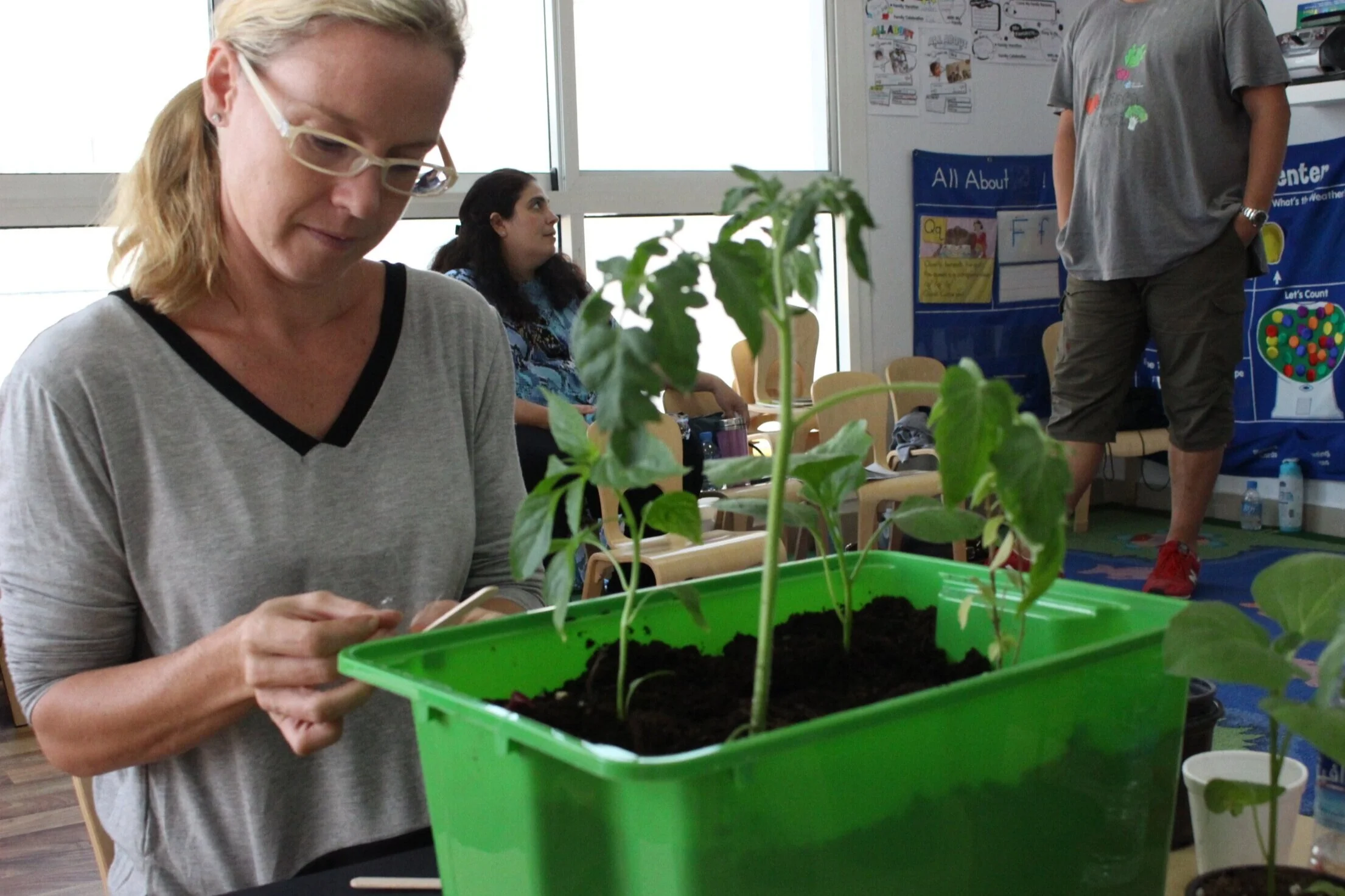Putting Sustainability at the Heart of Education
3-8yr olds
The Garden Project is the first Project Based Learning (PBL) curriculum to apply the STEAM framework to study nature's life cycles, from seed to table to seed again, in an innovative multidisciplinary exploration of nature, starting at age 3.
This nature-inspired program is based on the principles of sustainability and encourages children to learn about their natural environment. Children have rich opportunities to discover, observe and investigate, creating a sense of purpose and curiosity as they learn to nurture the plants they grow. At each step of the growing process, children are introduced to the scientific method, documenting their findings in The Garden Project Journals.
Program Overview
Levels and Age Group
The Garden Project's targeted age group is for 3-8 year olds. The program is subdividied into 3 levels, in accordance with a child's developmental stages: Level 1 – Wonder - fosters a child’s appreciation for the natural world and its elements; Level 2 – Observation - helps children become knowledgeable about the environment through careful observation of plants and their natural environment; and Level 3 – Investigation - leads children to apply scientific concepts through inquiry.
Materials
The Garden Project is complete of Teacher and Learner Resources to provide a holistic learning experience. Additional materials it makes use of are perishable and/or organic, such as seeds, seedlings, soil, fruit and vegetables, to protect our environment. These items are easily sourced locally, account for cultural variations and can be purchased at a low cost.
Project Planner
The Garden Project offers a flexible implementation schedule: over the course of the academic year (from October to May) or for a shorter period of time, from end of Winter to Spring.
Program Outline
The Garden Project is made up of 5 units – Preparing (Unit 1), Planting (Unit 2), Growing (Unit 3), Harvesting (Unit 4) and Decomposing and Regenerating (Unit 5) – following the full cycle of growing edible plants from seed to harvest to re-seeding. This is done through a systematic and developmentally appropriate approach where the emphasis is on joining the child on a journey of discovery. For children ages 3 to 8, this means building empathy between child and the natural world, facilitating a loving relationship with nature and our environment, before invoking responsibility towards it. The curriculum and its resources were published in English. Wherever English isn’t the primary language of instruction, The Garden Project incorporates English Language Learning strategies within its instructional design, empowering teachers to introduce English using a completely hands-on approach. See the Program Overview for Italian Schools
Scope & Sequence per Unit
Unit 1 - Preparing, Unit 2 - Planting, Unit 3 - Growing, Unit 4 - Harvesting, Unit 5 - Decomposing & Regenerating
Science CLIL
In many countries where English is not used as the native language, The Garden Project is used to teach Science through English. It is defined as a Science CLIL program. CLIL stands for Content and Language Integrated Learning. The Garden Project teaches students about students' natural environment, nature’s lifecycles and the function of edible plants, through the inquiry in the non-native language, English. Students acquire knowledge and understanding of science while simultaneously learning how to use the target language in English. The Garden Project Teacher’s Guide support teachers in delivering scientific terminology by providing the lists of target vocabulary and scaffolded linguistic structures to effectively communicate their knowledge of scientific concepts, processes and functions.
Try it out! Download your free Student Journal samples (one per level)
Teacher & Learner Resources
“Teachers often ignore one precious resource available to them: Mother Nature. There are so few reference materials available to them. This is why The Garden Project is very helpful not only for urban schools, but also for rural schools as well.
”








The Teacher's Manual gives teachers the step-by-step process of how to implement The Garden Project applying PBL within a STEAM framework. The classroom posters help teachers support learning by charting what students are planting and when these will be ready to be harvested.